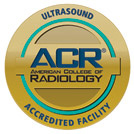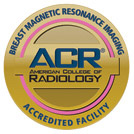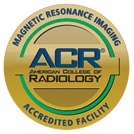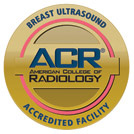If a patient has abdominal pain, a distended abdomen or is experiencing kidney, liver, gallbladder, bile duct, pancreas, spleen or abdominal aorta issues, a doctor may recommend an ultrasound of the upper abdomen. A safe and painless procedure, abdominal ultrasound uses soundwaves to create images of organs and other structures within this part of the body.
What Is an Abdominal Ultrasound?
Also called ultrasound scanning or sonography, this procedure involves a transducer and special gel that coats the skin and transmits high-frequency, inaudible soundwaves. The transducer generates the waves in a similar way to how ships and submarines use sonar technology to sense their surroundings and is roughly the size of a microphone. Once the waves hit an object, they bounce back.
Information gathered by the transducer is sent to a computer to compile an image, which gets displayed on a monitor. The procedure offers extremely detailed images or video loops down to the cellular level and may also be used to examine blood flow through the vessels.
The images are generated based on frequency and time, which vary with the body structure and tissue being examined. As such, ultrasounds provide different results based on whether an organ or object is solid or filled with fluid. This makes the procedure ideal for detecting abnormalities in their early stages, like tumors and cancerous growths.
A doctor may also request a Doppler ultrasound, which measures the speed and direction of the blood cells as they travel through the body’s vessels. This motion results in pitch fluctuations of the reflected soundwaves – scientifically known as the “Doppler effect.” This data is used to generate colored pictures or graphs that illustrate the movement.
Ultrasound technology picks up on qualities that ordinary X-rays would not show and offers real-time results. An ultrasound may further be used to guide a biopsy of the abdomen.
Who Should Have This Procedure?
An abdominal ultrasound helps assess the kidneys, liver, gallbladder, bile ducts, spleen, pancreas or abdominal blood vessels for abnormalities. A doctor may examine the area for:
- Abdominal enlargement, also known as distention
- Abdominal pain
- Liver functionality
- Kidney stones
- Gallstones
- Abdominal aortic aneurysm
At a later date, the technology may be used to assist with a biopsy or your doctor may specifically request a Doppler ultrasound to observe tumors.
If a patient’s bowel is filled with air or gas, an abdominal ultrasound might not provide accurate results, as transmitted soundwaves cannot fully pass through.
Preparation
Ultrasounds are traditionally performed on an outpatient basis, so minimal preparation is required. However, patients will be instructed not to eat or drink anything for a specified timeframe before the procedure and should arrive in loose, comfortable closing that easily exposes the abdominal area. Patients should also leave metal objects at home.
Depending on the area being examined:
- If the ultrasound is for the liver, spleen, gallbladder or pancreas, you may be instructed to abstain from eating eight to 12 hours before the exam.
- For the kidneys, your doctor may have you drink four to six glasses of liquid an hour before the exam and avoid eating eight to 12 hours before the procedure.
- For ultrasounds of the abdominal aorta, you will also need to avoid eating eight to 12 hours before the exam.
For all types of abdominal ultrasounds, the patient lies back on a table that may be tilted or moved during the procedure. Once you’re lying down, the sonographer will place a water-based gel over the area to improve the transducer’s contact and eliminate possible air pockets. You may be asked to turn to the left or right to capture certain images.
As the procedure begins, the radiologist moves the transducer back and forth with light pressure on the abdomen. After all images are taken, the gel is wiped off.
Following the exam, the patient can resume their day-to-day activities and dietary habits. The radiologist will examine the images and discuss the results with your doctor. You may be asked to come in for a follow-up appointment or schedule additional imaging. If your doctor requests a specific treatment, you may have to undergo another abdominal ultrasound to ensure their recommendations are taking effect.
Has your doctor recommended an abdominal ultrasound? Contact us to make an appointment today!
















